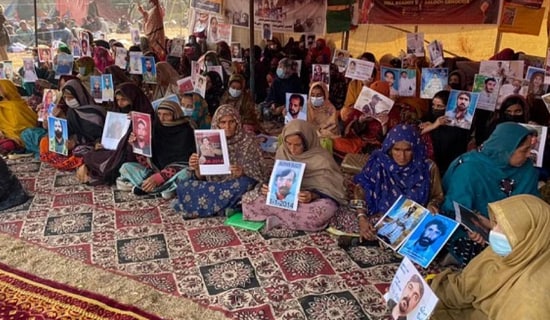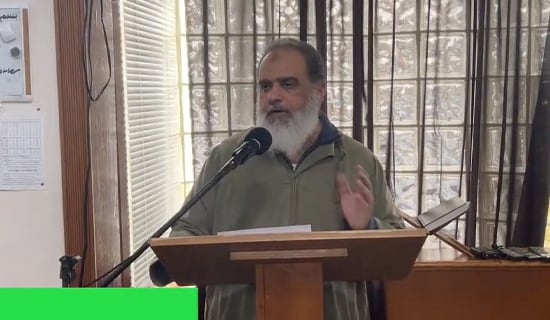One of the most serious looming crises in the Middle East is the water shortage crisis. Recent articles in the Arab press have underscored the strategic dimension of the crisis and its long-term implications for peace and stability in the Middle East. Thus, the London-based Saudi daily Al-Hayat wrote about "Water: the Hidden Bomb Between Crises?"[1] The Saudi paper Al-Riyadh warns that "the water struggle will lead to wars in the region;"[2] Al-Hayat states that "water, after land, will determine the future of the Arab-Israeli conflict."[3] Another Saudi paper, Okaz, published an interview with a water researcher who maintained that "the Arabs are approaching thirst."[4] In an earlier article, Okaz reported about "water inYemen… a real crisis treated with tranquilizers."[5] In a symposium on the impact of the decline of water resources on economic growth, the newly-appointed Saudi minister of irrigation, Dr. Ghazi Al-Qusaibi,[6] echoed the strategic analysts, predicting that future wars will be water wars.[7] Similarly, the Egyptian minister of water resources, Dr. Mahmood Abu-Zayd, warned that water conflicts could lead in the next few years to world wars originating from the Middle East.[8]
Water: Supply and Demand Imbalances
Unlike other forms of supply and demand imbalances, in the domain of water such imbalances often transcend market forces and result in regional political and strategic dilemmas. First, in the Middle East, most of the water resources originate upstream from countries outside the control of the users downstream. Second, in the absence of an appropriate political environment, regional cooperation for equitable distribution and use of water resources is lacking.
A recent study conducted by Egyptian researcher Dr. Hamdi Abd Al-Adhim shed some light on the current status of water supply and demand in the Middle East. According to this study, the total needs of the Arab countries for water in 2002 reached 189.7 billion cubic meters (bcm) which rose from 153 bcm in 1990. These needs were estimated to rise to 280.6 bcm in 2025. For example, the Egyptian requirements for water, for various uses – agriculture, industry, as well as potable water – were 70.5 bcm in 2000 but will rise to 103.2 bcm in 2025. Dr. Hamdi has determined that water surplus, the differential between supply and demand, was 103 bcm in 1990 but declined to 84.2 bcm in 2000. By 2025 the water surplus will turn into a water deficit of 2.25 bcm annually due to a growing population and a subsequently growing demand. Currently, water deficits are recorded in Iraq, Libya, Oman, Jordan, and the U.A.E. By 2025, Egypt will suffer a water deficit of 19.2 bcm, followed by Sudan(9.7 bcm), Saudi Arabia (1.6 bcm), and Jordan (1.15 bcm).
One of Dr. Hamdi's major concerns is that most rivers in Arab countries originate from non-Arab countries which, as a group, control 88% of water flowing into Arab lands. In Egypt, dependence on water originating from outside the country is 90%, but it is only 50% in Syria.[9]
According to a study by the School of Advanced International Studies of Johns Hopkins University, the population in the Jordan River basin, which includes Israel, Jordan, the West Bank/Gaza and southern Syria, has grown six fold since the late 1940s. This area needs 15 bcm annually for self-sufficiency but it currently has available only 3-5 bcm.[10] To make up for the shortage, groundwater, the main source of water in many countries, is being extracted well beyond the renewal rate of the resource.
According to the World Bank, the Middle East region is by far the driest and most water scarce region in the world. Thus, the average per capita water availability in the region is about 1,200 cubic meters per year (world average is close to 7,000). The pressures on water are exacerbated by a rapidly growing population, fast urbanization, droughts, and desertification - not least important is the inefficient use of water for agriculture.[11] In the words of The New York Times,"the [Saudi] kingdom's gamble on agriculture has sucked precious aquifers dry."[12] In San'a, the capital of Yemen, one of the most water poor countries, the number of boreholes randomly dug has reached 7,000.[13] And this phenomenon of random digging of boreholes is not a uniquely Yemeni problem.
In a symposium on the water crisis in the Middle East, the Secretary-General of the Arab League, Amr Moussa, identified seven challenges which he thinks Arab water security is facing: 1) limited water resources and decline in the water credit per capita; 2) rapid population growth; 3) increasing demand for food supplies; 4) increasing water supplies through recycling of sanitation water; 5) failure to fulfill international water agreements (reference is perhaps mainly to Turkey); 6) Israel's ambitions to control water in the occupied area; 7) the need to implement the World Bank's recommendation regarding water pricing.[14]
The Reduction of the Water Deficit
According to Professor Tony Alan of the School of Oriental and African Studies at London University, the water deficit is resolved by the existence of illusory water in the international grain markets. He maintains that the production of one ton of wheat requires 1,000 tons of water.By importing wheat and other grains, often heavily subsidized by the producing countries, the importing Middle Eastern countries create the illusion of water sufficiency.[15] The deteriorating supply/demand ratio, if left unresolved, could lead to conflicts and wars, but the growing water deficit could also provide an impetus for rational, long-term strategic policies to mitigate potential conflicts.
Water Conservation and Water Use Efficiency
Water conservation is the most reliable and least expensive way to stretch water resources. An example is the recent campaign by the Syrian government to reduce the use of water in agriculture. In Syria, as in most countries in the region, agriculture uses 80-90% of water resources. Syrian experts have estimated that, in the case of wheat, if a sprinklers system is introduced, the yield will increase by 23% while water use will be reduced by 43% or the equivalent of 6.1 bcm annually. Likewise, using sprinklers on 250 hectares of cotton will increase the yield by 19% and reduce water use by 27%.[16] In the case of Israel, the adoption of low volume irrigation systems (e.g., drip, micro-sprinklers) and automation has increased the average efficiency to 90% as compared to 64% for furrow irrigation. As a result, the average requirement of water per unit of land area has decreased from 8,700 cum/ha (cubic meters/hectares) in 1975 to the current application rate of 500 cum/ha. At the same time agricultural output has increased twelve fold, while total water consumption by the sector has remained almost constant.[17]
A Shift from Supply to Demand Management
A workshop on sustainable groundwater management held in San'aa, Yemen, in June 2000, stressed the deterioration of the aquifers throughout the Middle East from over abstraction and pollution.It concluded that supply-side options such as the groundwater recharge and the use of brackish groundwater and fossil groundwater, could provide some direly needed additional water, but that their potential is limited in terms of quantity, quality, location, and sustainability of the resources. There is thus a need to shift from supply to demand management. This requires new policies and skills. However a lack of data, the weakness of monitoring networks, the inappropriateness of some legal and regulatory frameworks, the difficulty of enforcing regulations, and the fragmentation of the institutional framework impose clear limits on what can be achieved in terms of groundwater management. But the path, if not the means, is clear.[18]
Although water demand management measures are crucial, additional water supplies will have to be mobilized. This will have to include seawater desalination, which is already extensive in Saudi Arabia, the U.A.E., Kuwait and, to a lesser but growing degree, in Israel, as well as intensive use of wastewater, the reduction of water leakage in almost all municipal water supply pipes, and appropriate pricing policies, including financial incentives to farmers to use water-saving devices, e.g., sprinklers or drip irrigation. In the long run, regional water projects will have to be considered both for economic and environmental reasons.
Water as a Strategic Commodity
Like oil, water is a strategic commodity with a surplus in some countries and a deficit in others. Also like oil, water is not distributed equitably. Canada, for example, with a population of 31 million, or 0.5% of world population, controls 2,850 bcm of fresh water, or 2.5% of the world total, which is the equivalent of the Chinese reserves with a population 40 fold that of Canada.[19] The sale or transfer of surplus water in a systematic and organized fashion, preferably under some sort of an international convention may become necessary. Israel, a water-deficit country has contracted to buy water from Turkey, a water-surplus country. Similar transactions in the future will most likely be common and unlike oil, such a transfer whether on high seas or overland will not be a serious source of pollution. *
Dr. Nimrod Raphaeli is Senior Analyst of MEMRI's Middle East Economic Studies Program.
SUPPORT OUR WORK

[1] Al-Hayat (London), December 16, 2002.
[2] Al-Riyadh (Saudi Arabia), October 24, 2002.
[3] Al-Hayat (London), May 12, 2002.
[4] The interview refers to a recently published book by three researches. The book's title is "The Management of Water in Islam," Okaz (Saudi Arabia), December 21, 2002.
[5] Al-Okaz (Saudi Arabia), October 15, 2002.
[6] Please see MEMRI's past reports on Dr. Ghazi Al-Qusaibi:
Special Dispatch Series - No. 372: The Saudi Ambassador to London's Ode to Suicide Bombers
Special Dispatch Series - No. 251: The Saudi Ambassador in London: We Must Not Rule Out the Option of War with Israel
Special Dispatch Series - No. 256: Saudi Ambassador to London: Bush Has Complexes… 'The Entire World Fears a Future in the Shadow of Dubya'
Special Dispatch Series - No. 389: Saudi Ambassador to London: 'I Want Peace with Israel; I Long to Die as a Martyr; Stoning and Amputating Hands Are at the Core of Every Muslim's Belief'
Special Dispatch Series - No. 416:Saudi Reactions to the Lawsuit by September 11 Families
[7] Al-Sharq Al-Awsat (London), December 24, 2002.
[8] Al-Riyadh (Saudi Arabia), October 24, 2002.
[9] Al-Hayat (London), November 10, 2002.
[10] Al-Quds Al-Arabi, (Egypt), August 8, 2002.
[11] Al-Hayat (London), December 16, 2002.
[12] The New York Times, January 26, 2003.
[13] Okaz (Saudi Arabia), October 15, 2002.
[14] Al-Dustour (Jordan), December 9, 2002.
[15] Al-Quds Al-Arabi (Egypt), August 8, 2002.
[16] Teshreen (Syria), August 26, 2002.
[17] Ministry of Infrastructure, www.israel-mfa.gov.il/mfa/go.asp.
[18] The World Bank, June 2000, "Middle East and North Africa Regional Water Initiative: Workshop on Sustainable Groundwater Management – Summary Report"
[19] Al-Hayat (London), May 12, 2002 (quoted from Roger Cans, La Ruee vers l'Eau, Paris 2001).




